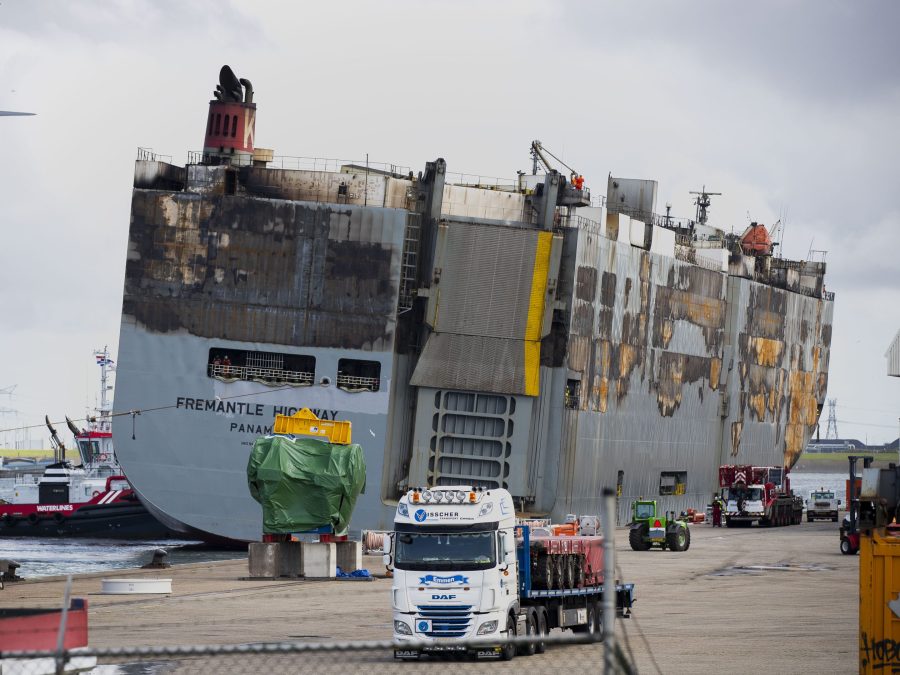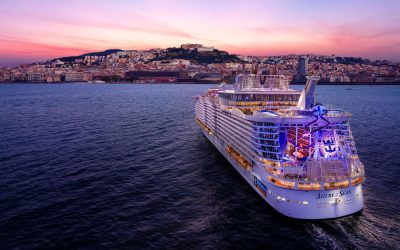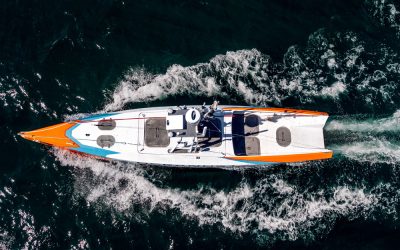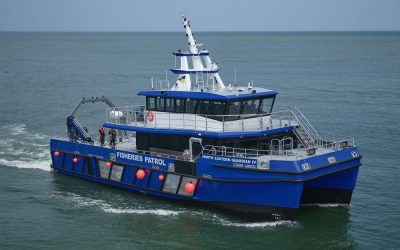Special project on electric vehicle fires leads company to sign distribution agreements for innovations in marine fire safety
Fires onboard vessels at sea have become increasingly common in recent times. Many of these are allegedly associated with the carrying of electric vehicles (EVs). The most recent and prominent incident made headlines in July when the Fremantle Highway, a 200m ro-ro vehicle carrier, caught fire off the coast of the Netherlands in July.
While the ultimate cause of the fire is still unknown, the vessel’s cargo of EVs has been posited as a probable root cause. The fire onboard Fremantle Highway led to the death of one crew member and left several others injured. Moreover, the fire is the fourth major incident since 2021 to occur on a car carrying vessel, and the second in July 2023 alone.
A recent report from insurance company Allianz stated that lithium-ion batteries pose a “growing risk” for car carriers, with fires mostly resulting from “substandard manufacturing or damaged battery cells or devices, over-charging and short-circuiting”. Allianz also found that fires were the second-highest cause of loss for shipping vessels last year, after sinkings. In 2022 eight vessels were lost and more than 200 outbreaks of fires were recorded.
A call for increased awareness
As a result of these incidents multiple organisations have called for increased awareness of the risks associated with handling EVs as cargo. “These tragic cases have highlighted the urgency of the project regarding safety onboard when you carry electric vehicles. Solutions need to be found, or at least there needs to be some more focus on this matter,” Louise Søgaard, product manager at Viking Life-Saving Equipment, tells The Naval Architect.
Viking has recently launched an initiative on electric vehicle fires which includes signing distribution agreements for fire extinguishing innovations in marine fire safety. The company will be distributing a strong range of EV fire suppression solutions and technologies to shipowners worldwide, including Bridgehill’s car fire blankets. With the increasing demand for EVs the company aims to further develop its position as a leader and go-to expert in maritime fire safety solutions.
The special project was launched in June this year, a month before the Fremantle Highway incident, and it incorporates much of the knowledge the company has already gained through fighting conventional fires onboard vessels. Viking and its partners hope to take a proactive stance in terms of potential safety issues that both its customers and the wider industry are facing.
Viking has already marketed the HydroPen, a unique and user-friendly system for use in fighting fires onboard container ships. This system has now seen almost industry-wide implementation. According to Viking, the HydroPen has already been used to contain a fire in a container loaded with 150,000pcs lithium-ion batteries. “Electric vehicle fires are in many ways very similar to this case. We have maintained close dialogue with our customers, and we try to identify and act on the challenges they face,” says Søgaard.
Recommended risk assessments
The European Maritime Safety Agency Guidance on the carriage of alternative-fuel vehicles in ro-ro spaces recommends risk assessments for every vessel moving EVs and carriage of procedures for prevention and mitigation of EV fires. Recommended procedures included the use of “portable equipment (local water cooling etc.)” and “a strategy to contain the fire”.
By working in tandem with its suppliers, Viking hopes to produce a solution to both these problems. For instance, Bridgehill’s fire blanket offers specific performance characteristics to deal with EV fires and the company has delivered several units to a car carrier owner and to ferries worldwide. The 6m x 8m blankets weigh 26kg and can be deployed by two personnel and reused multiple times. The blankets have a melting point of around 2,500°C. As a result, they can contain an EV fire securely until a more robust response is available or the vehicle is removed, according to Bridgehill. Each car deck should be equipped with its own fire blanket.
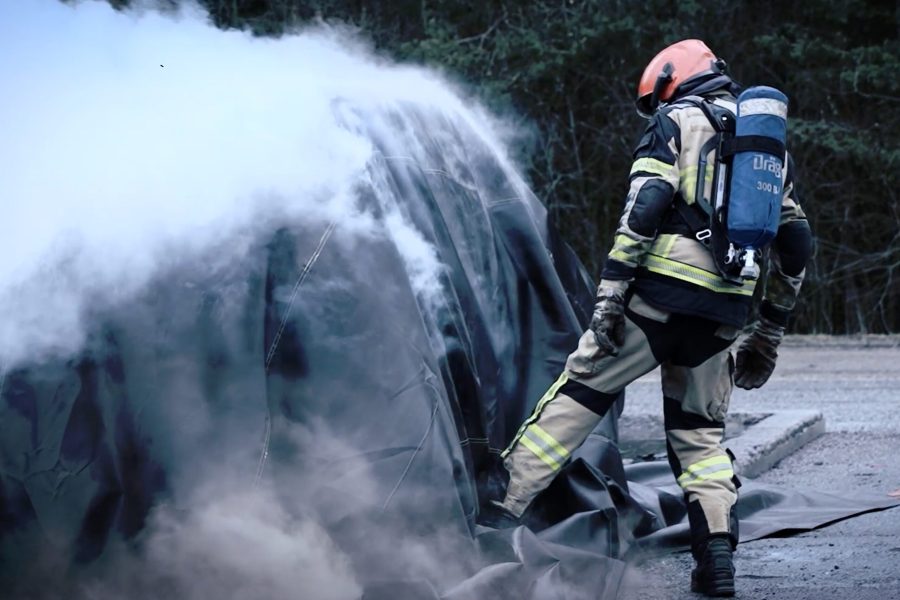
Testing of a Bridgehill fire blanket. The blankets can swiftly contain flames, smoke and toxic fumes during an EV fire. Source: Viking Life-Saving Equipment
“On the equipment side it is of key importance to isolate and stabilise an EV fire until you reach a port. That’s exactly what the equipment that we are working with now is for,” says Søgaard.
The EU has also funded the Legislative Assessment for Safety Hazards of Fire (LASH) project, which will address 20 critical aspects identified by the European Maritime Safety Agency and the International Maritime Organization. The project has further revealed new information that can assist owners in managing fires onboard vessels – for instance how to deal with a vehicle fire that has not reached the battery – which Viking is also interested in exploring a solution to.
Crew training is vital
Adequate training and preparedness are also vital for crew members who need to tackle fires at sea. This is something Viking is investing in through the company’s academy. “Seafarers are rarely trained and experienced firefighters, so training is such a crucial element to consider. I know that our customers have spent quite a lot of effort in trying to train their crew to tackle these scenarios and bring down response times,” says Søgaard.
“There is no doubt that we’re going to see a lot more electric vehicles being transported by sea, it is a safety challenge to the industry and to the crew and passengers onboard the vessels,” she adds. “I really hope to see a lot more focus on the subject and that operators will be able to educate and train their crew to a high level of competency and preparedness, both with the handling of the various products that we supply as a vendor, but also in handling and supressing a fire before it reaches the battery.”
The results of the investigation into the fire onboard the Fremantle Highway are not yet known, and it will likely take time before they are released. For Viking the findings, combined with the company’s own research, will hopefully bring even more knowledge into what the company can provide in terms of safety for ship owners and crew members.
“I’m hoping that this campaign and these products that we put on the market can bring more focus to the issue. Viking’s mission is to protect and save human lives at sea and we always remain proactive towards emerging safety challenges,” concludes Søgaard.
